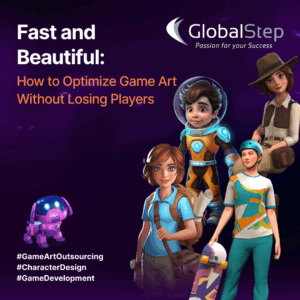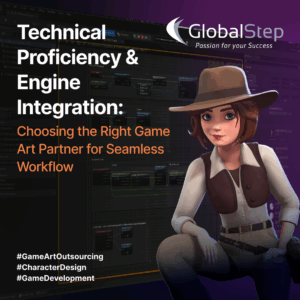How to empower your players voices to drive the video game’s success through analysis and proactive engagement.
Author: Mike Pipicello
Mike is the Vice President of Client Services at GlobalStep and works with Video Game Clients to enhance the overall player experience and improve monetization.
Gaining players is expensive! The average cost per download on a free to play game in the mobile space can range anywhere from US$ 2-6per download. It is crucial that all parts of the game and experience are top notch to protect that investment.
According to Ark Invest Big Ideas only 20% of revenue came from free to play models, this increased to 75% in 2020 and projected to make up 95% of all game’s revenue by 2025.
What does that mean?
In the free to play model, players have no commitment, simple: something seems interesting, you download it and you if you don’t enjoy it, just delete it and onto the next. According to gameindstry.biz only 2.2% of players spend on a F2P game and even more shockingly 66% of players stop playing after one day.
There are so many elements that go into getting your potential player to even get past this moment of disillusion and avoid deleting the game, so it’s paramount that you put your best foot forward and engage them in every aspect of your game to keep them going.
This seems straight forward but we will dig into this and uncover all the important pieces which are often overlooked about what makes a game successful and how you can leverage this knowledge to increase monetization and decrease player churn.
We all know the quality of the game, the art, the gameplay, music and graphics are crucial to keeping a player engaged and wanting to play. This is what makes a game a hit and can become a part of your players everyday routine.
As we dive into what elements of player experience developers and producers spend time on, the player support eco-system is often overlooked. We will more specifically investigate what can be done from a player experience standpoint to increase the video games success and retention.
According to Ark Invest, 46% of all revenue come from the White Whale (0.2%) of a game’s player population, imagine the impact of growing that to 1%.
Problems and Solutions
Where do we start? The first thing the player sees before downloading a game and deciding if they should are reviews, too often we see on iOS or Android an average rating of 4.2 with thousands of reviews and downloads but not see any replies from the developers and when developers do reply, very often they are canned responses acknowledging the review.
It is crucial that all the online store and social media reviews are not only observed but managed, ensuring that they are replied to for concerns, feedback collected, and fans thanked for their positive comments.
Many free to play games abandon this commitment as it takes effort and cost to have this accomplished, but what is the cost of not doing it? Is it truly worth saving this little piece of budget? This is where the “bleeding” and game deletion kick in. The information shared on the reviews are the vehicle to feedback into the development and testing teams to improve for future releases. That is obvious, but a strong player support function will not only look at the surface level but also analyze the comments and implement a proactive approach to curbing the negative reviews. According to Apple app store analysis 79% of users read the reviews before downloading a game. If there are critical reviews left and no response by the developer or social media team the player will assume that the negative comment is a reality of the game and move on.
Now we have passed the reviews and your potential player is a player. How can we retain them?
Every traditional business forecast for customer churn and the gaming industry is not immune to churn and is no different, but it is crucial that this is a metric that is measured and managed. Analysis of player churn should be part of your player support daily rigor. A strong player support ecosystem will provide analysis of incoming tickets, emails, queries and reviews. This analysis should be insightful and include root causes to why player churn is happening. These insights are the vehicle that will drive actions to reduce the churn and protect the investment that was made to attract these players.
The actions should be 2 pronged. The two approaches should be:
- First a short-term fix which can be deployed quickly to stop the churn while the development teams work on deploying the permanent fix.
- Secondly a permanent medium to long term solution which will involve fixing the issue through technology/development and,
As a concrete example, if game play is too difficult in level 7 and we see this both through player drop off and a higher number of queries from players at that level; we will look at an update which will simplify the game play in level 7. Our player support team can bridge that gap until it is done though pro-active outreach leveraging channels like chat, emails or strategic social media posts, this outreach can provide your players with hints or sending “we are your guide through this adventure” surprise gems or potions.
Essentially player support is the voice of your players and should be a part of the Game Experience, embedded into the life cycle of a game providing insights and ideas to your development, art, and testing teams.
Free to play is the fastest growing segment in the games market and changes and improvements to the entire game experience need to be in sync to pull every percentage of retention and monetization possible to enable success. Too often we tend to forget that minuscule positive changes in player retention, translate in meaningful revenue stream!
Our strategy at GlobalStep is to empower your players voices and taking all their feedback and comments and turning them into actions to drive this success through analysis and proactive engagement. We have implemented simple process changes such as operational hours changes and streamline “contact us” channels which have resulted in almost immediate return on investment, decrease of 60% in response time and a 1.6-point increase in App Store ratings.
Get in touch with us today to discover how we can enable a robust and dynamic player support infrastructure and improve the overall Player Experience while driving improved monetization strategies.
If you would like to read more about our Player Support Services, please click here
Video Game Development, Video Game Design , Game Level Design, Video Game Porting





